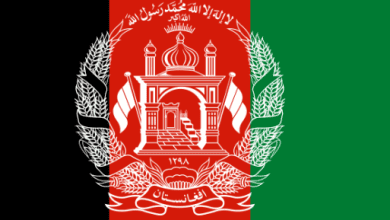Runeberg’s Birthday In Finland 2024
Celebrate Runeberg's Birthday in Finland: A Sweet Taste of Tradition
Discover the delicious traditions of Runeberg’s Birthday in Finland, from mouthwatering cakes to cultural celebrations. Explore the sweet side of Finnish heritage.
Related:
QUICK FACTS:
- Date: February 5th
- Main Components: Runeberg’s poems, Runeberg’s tortes, flag flying
- Popularity: Widely celebrated across Finland
- Pairings: Coffee, tea, punsch
- Variations: Different flavors and toppings of tortes
Introduction
Finland is a country that takes pride in its culture and history, and one of the ways it expresses this is by celebrating the birthday of its national poet, Johan Ludvig Runeberg. Runeberg was a prolific and versatile poet who wrote in Swedish, but whose works resonated with the Finnish people and inspired their national identity and resistance against Russian oppression. His most famous work is The Tales of Ensign Stål, a collection of poems that depict the events and characters of the Finnish War of 1808-1809. One of these poems, Maamme (Our Land), became the national anthem of Finland.
Related: Independence Day In Grenada 2023
Runeberg’s birthday, February 5, is not an official flag day in Finland, but the state flag is still traditionally flown on this occasion. It is also a day when many Finns enjoy a special pastry called Runeberg’s torte, which was invented by his wife, Fredrika Runeberg, who was also a poet and a novelist. The torte is made of almond flour, breadcrumbs, raspberry jam, sugar ring, and almonds, and is often moistened with punsch, a liqueur made of arrack, water, sugar, and spices. The torte is said to be Runeberg’s favorite breakfast.
In this article, we will explore the life and works of Johan Ludvig Runeberg, his role and influence in Finnish nationalism, and the traditions and celebrations associated with his birthday.
Runeberg’s Early Life and Education
Johan Ludvig Runeberg was born in Jakobstad (Pietarsaari) in 1804, son of a sea captain. He came from a rather poor, but well-connected family. These connections helped him forward in his studies as a young boy and also during his university years. He studied at the Imperial Academy of Turku and the University of Helsinki, where he learned Latin, Greek, Swedish, Finnish, and other languages. He graduated in 1827 and became a tutor and a teacher at various schools, including the Porvoo Gymnasium. He married Fredrika Tengström in 1831.
Related: Liberation Day In San Marino 2023
Runeberg’s Literary Career and Works
Runeberg started writing poems and short stories for newspapers and journals, such as Helsingfors Morgonblad, Borgå Tidning, and Lauantaiseura (Saturday Society). He published his first collection of poems in 1830, which included Maamme (Our Land), the national anthem of Finland. He wrote several novels, plays, and hymns, such as Fänrik Ståhls Sägner (The Tales of Ensign Stål), Nadeschda, Kung Fjalar, and Kanteletar. He was influenced by romanticism, nationalism, and the Kalevala, the Finnish epic poem. He used different styles, languages, and pennames to express his ideas and perspectives on various topics, such as nature, humanity, history, society, and politics.
Runeberg’s Role and Influence in Finnish Nationalism
Runeberg lived during the Finnish War (1808-1809) and the Grand Duchy of Finland (1809-1917), when Finland was under Russian rule. He wrote poems that celebrated Finnish heroes, culture, and landscape, such as Vänrikki Ståhlin tarinat (The Tales of Ensign Stål), which depicted the events and characters of the Finnish War. He inspired the Finnish intelligentsia and awakening movement, such as Johan Vilhelm Snellman, Zacharias Topelius, and Fredrik Pacius. He was considered as the national poet of Finland and a founder of Finnish literature.
Conclusion
Johan Ludvig Runeberg was not only a prolific and versatile poet, but also a symbol of Finnish identity and resistance against Russian oppression. His life and works had a significant impact on Finland and its people, and are still celebrated today with poems, flags, and tortes. For those who want to learn more about Runeberg or related topics, here are some suggestions for further research or reading:



